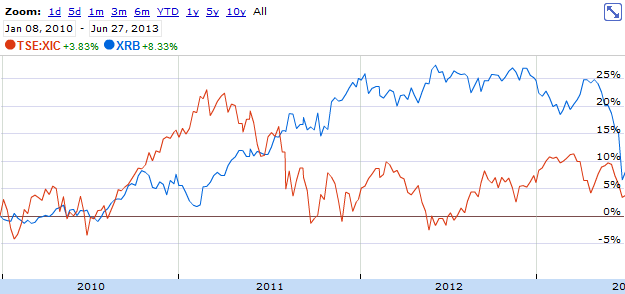Why a diversification is a piece of cake
After almost four years of false alarms, the bond bears are finally able to act smug. Broad-based Canadian bond index funds have fallen in price about 4% or so in since the beginning of May. Meanwhile, real-return bonds have taken it on the chin: they've plummeted about 13%.










